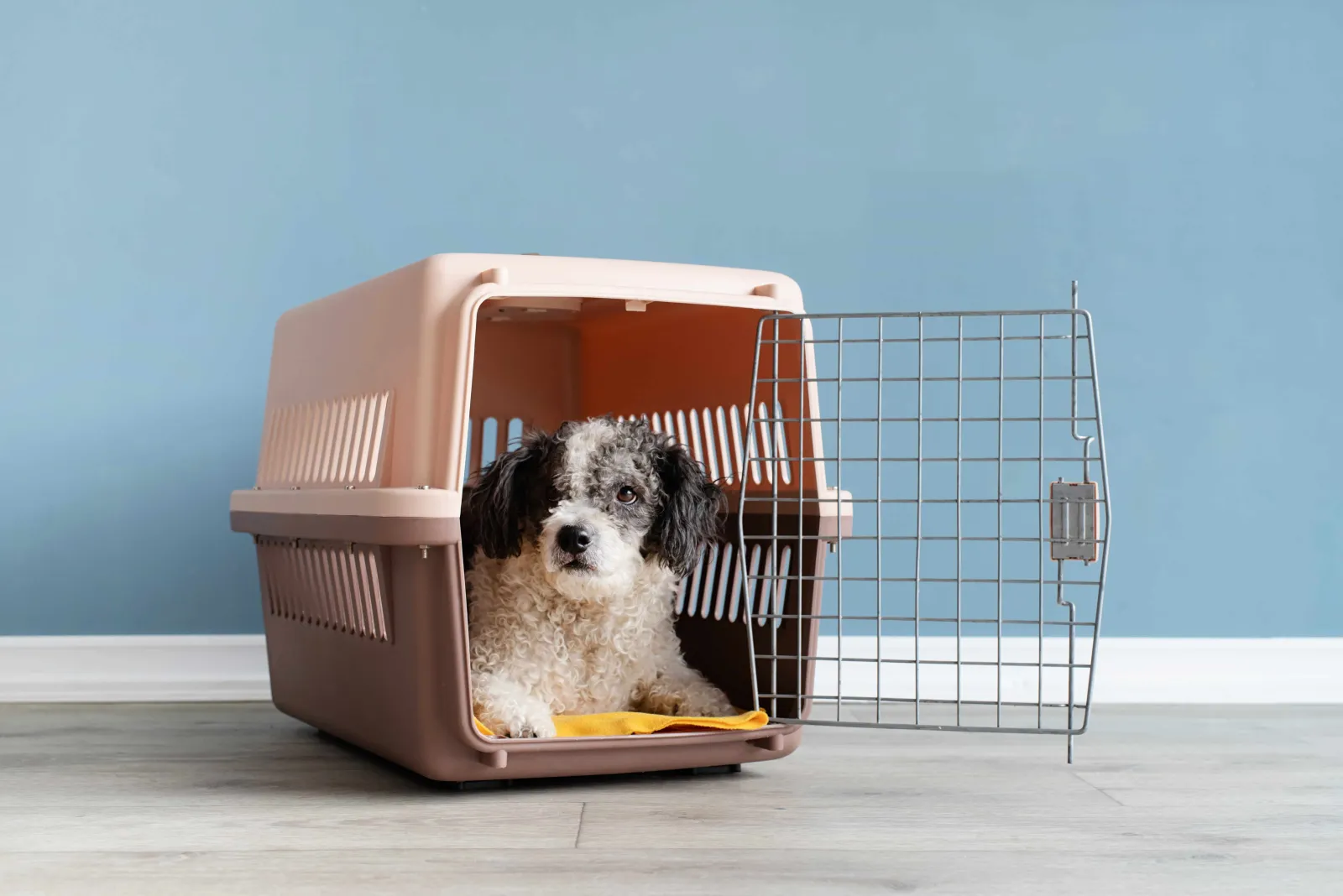How To Pick The Right Crate For Your Dog
Selecting the perfect crate for your dog involves more than measuring its size and finding a match. It's about comfort, safety, and adapting to your furry companion's needs, whether at home or on the go.

Understanding Dog Crate Sizes
Getting the right size crate is key for your dog's comfort and safety. A crate that's too small can be restrictive and stressful, while one that's too large might not provide the security and coziness dogs often seek in their den-like spaces. As a general rule, the crate is big enough for your dog if it can stand, turn around, and lie down comfortably. However, don't choose a crate so big that your pet could use one end as a sleeping area and the other as a bathroom.
Here's a quick guide to dog crate sizes:
- Small Crates are typically 24 inches in length and suit breeds like Yorkshire Terriers or Chihuahuas.
- Medium Crates measure around 36 inches and are perfect for Beagles or French Bulldogs.
- Large Crates are usually 42 inches long, fitting for Labradors or Golden Retrievers.
- Extra-Large Crates measure about 48 inches or more, suitable for Saint Bernards or Great Danes.
Benefits of Portable Dog Crates
Portable dog crates are invaluable for pet owners who travel frequently with their dogs or require an easy-to-move crating solution at home. These crates are typically lighter than their stationary counterparts and often come with handles or wheels. When choosing a portable crate, look for durable materials that can handle wear and tear yet are lightweight enough for easy transport. Additionally, ensure the crate has sufficient ventilation to keep your dog cool and comfortable.
How to Crate Train a Dog
How to crate train a dog begins with choosing the right crate. Once you have the perfect crate, introduce your dog to it slowly. Place their favorite blanket or toy inside (or something with your smell) to create a positive association. Feed meals near the crate initially, then inside it, to build comfort with being in the crate.
Gradually increase your dog's time in the crate, starting with short periods when you are home. This can prevent anxiety and help your dog learn that the crate is a safe space, not a punishment. Always keep the crate training experience positive with lots of treats and praise to reinforce good behavior.
Choosing Airline Approved Dog Crates
If you're planning to travel by air, selecting an airline approved dog crate is essential. These crates must meet specific criteria set by airlines to ensure the safety and comfort of your pet during the flight. Key features to look for include:
- Durable Material: Hard-sided crates made of rigid plastics are often required.
- Adequate Ventilation: Crates must have ventilation on at least three sides.
- Secure Locking Mechanism: To prevent escapes.
- Food and Water Dishes: These should be attached inside the crate door and refillable from the outside to keep your dog hydrated and happy.
Always check with your airline for specific pet travel requirements before purchasing a crate, as regulations can vary.
Choosing the right crate for your dog doesn't have to be daunting. By understanding dog crate sizes, the convenience of portable dog crates, mastering how to crate train a dog, and knowing what makes an airline-approved dog crate, you're well on your way to making informed decisions for your pet's comfort and safety.
Our dogs bring immense joy and companionship into our lives, and ensuring their comfort while they rest or travel is just one way we can show our love and appreciation for them. If you need more advice on choosing the right crate or have any concerns about crate training, visit us at Forever Vets. Our team is dedicated to providing your beloved pets the best care and advice, ensuring they live happy and healthy lives.


